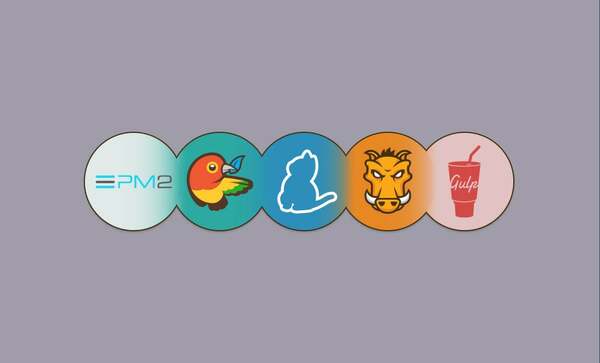Notifications
ALL BUSINESS
COMIDA
DIRECTORIES
ENTERTAINMENT
FINER THINGS
HEALTH
MARKETPLACE
MEMBER's ONLY
MONEY MATTER$
MOTIVATIONAL
NEWS & WEATHER
TECHNOLOGIA
TV NETWORKS
VIDEOS
VOTE USA 2026/2028
INVESTOR RELATIONS
COMING 2026 / 2027
ALL BUSINESS
COMIDA
DIRECTORIES
ENTERTAINMENT
FINER THINGS
HEALTH
MARKETPLACE
MEMBER's ONLY
MONEY MATTER$
MOTIVATIONAL
NEWS & WEATHER
TECHNOLOGIA
TV NETWORKS
VIDEOS
VOTE USA 2026/2028
INVESTOR RELATIONS
COMING 2026 / 2027
About Me
 salma khan
salma khan I'm a blogger and Content writer. Writing or blogging is a passion for me. With this passion, I have made a lot of articles and news. Currently, I'm working as a full-time writer with Realclobber where I share my knowledge in various subjects across the world.
 salma khan -
September 11, 2023 -
Technology -
build tools
Webpack
Gulp
Grunt
-
1.6K views -
0 Comments -
0 Likes -
0 Reviews
salma khan -
September 11, 2023 -
Technology -
build tools
Webpack
Gulp
Grunt
-
1.6K views -
0 Comments -
0 Likes -
0 Reviews

In the world of modern web development, efficiency and productivity are paramount. With the increasing complexity of web applications, developers often find themselves faced with repetitive tasks, such as minifying files, optimizing assets, and managing dependencies. This is where build tools for web developers come to the rescue. Build tools like Webpack, Gulp, and Grunt have emerged as essential components in the web developer's toolkit, enabling them to automate these tasks, streamline workflows, and enhance the overall development process.
As web applications grow in size and complexity, managing the various components becomes increasingly challenging. Developers need to deal with JavaScript modules, CSS files, images, fonts, and more. In addition, performance optimization, such as minification and bundling, is crucial to ensure quick loading times for users. Manually performing these tasks can be time-consuming and error-prone, especially as the project scales.
Build tools address these challenges by automating repetitive tasks and providing a standardized approach to managing assets and dependencies. They help developers focus on writing code rather than spending time on mundane tasks, thus improving efficiency and reducing the likelihood of errors.
Webpack has gained widespread popularity as a powerful module bundler. It excels at managing assets, dependencies, and code splitting. Webpack's core concept is the module, allowing developers to structure their codebase into smaller, manageable pieces. These modules can be JavaScript, CSS, images, or any other asset type.
Webpack's key features include:
Gulp is a task runner that focuses on code over configuration. It uses a simple and intuitive syntax to define tasks and workflows. Gulp operates on streams, allowing developers to manipulate files as they flow through a series of tasks.
Gulp's main features include:
Grunt, like Gulp, is another popular task runner. It focuses on configuration-driven tasks, providing a robust way to automate repetitive processes. Grunt uses a configuration file where developers define tasks and their settings.
Grunt's notable features include:
Utilizing build tools like Webpack, Gulp, or Grunt offers several benefits to web developers:
In today's fast-paced web development landscape, efficiency and automation are essential. Build tools like Webpack, Gulp, and Grunt offer developers the means to streamline their workflows, automate repetitive tasks, and optimize assets. By using these tools, developers can enhance the performance, maintainability, and overall quality of their projects. Whether you're bundling JavaScript modules, optimizing images, or simply seeking to improve your development process, integrating these build tools into your toolkit can provide significant advantages and pave the way for a more productive and enjoyable development experience.
